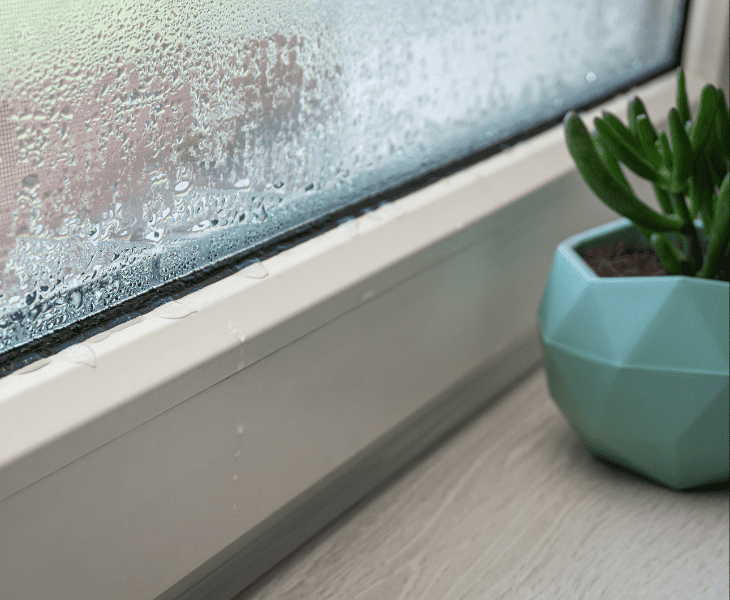
Condensation and mould are common concerns for landlords, particularly in the UK’s climate where cooler temperatures and damp weather can exacerbate these issues. Not only can they cause damage to your property, but they can also lead to tenant complaints and potential legal obligations if not addressed promptly.
In this guide, we’ll walk you through the causes of condensation and mould, how to prevent them, and what to do if they occur in your rental property.
What causes condensation and mould?
Condensation occurs when warm, moist air comes into contact with cooler surfaces, such as walls, windows, or tiles, leading to water droplets forming. If this moisture isn’t managed, it creates the perfect environment for mould to grow.
Common causes include:
- • Poor ventilation, especially in areas like kitchens and bathrooms.
- • Insufficient heating, leading to cooler surfaces.
- • Tenant habits, such as drying clothes indoors without proper ventilation.
- • Leaks or damp issues in the property.
What problems can mould cause?
Mould can cause:
- • Structural damage to your property if left untreated.
- • Health issues for tenants, particularly those with allergies or respiratory conditions.
- • Legal consequences if tenants claim the property is unfit for habitation.
Addressing condensation and mould promptly protects your investment and ensures a good landlord-tenant relationship.
Preventing condensation and mould
Prevention is always better than cure. Here are steps landlords can take:
1. Improve ventilation
- • Install extractor fans in kitchens and bathrooms.
- • Ensure trickle vents on windows are operational.
- • Encourage tenants to open windows regularly, especially when cooking or showering.
2. Maintain proper heating
- • Provide guidance to tenants on maintaining a consistent temperature.
- • Ensure the property’s heating system is in good working order.
3. Address damp issues
- • Regularly check for leaks in roofs, walls, or plumbing.
- • Ensure gutters and downpipes are clear and functioning.
- • Consider adding damp-proof membranes or tanking in problem areas.
- • Provide a dehumidifier for problem areas.
4. Tenant education
- • Include a section in the tenant handbook about managing condensation.
- • Encourage tenants to use lids on pans, dry clothes outdoors or in well-ventilated areas, and wipe away condensation on windowsills.
Dealing with mould
If mould has already developed, take the following steps:
1. Identify the cause: Determine whether it’s due to tenant habits or an underlying issue such as a leak.
2. Clean affected areas: Use mould-specific cleaning products or hire a professional service for severe cases.
3. Repair and rectify: Address the root cause to prevent recurrence, whether it’s improving ventilation or fixing damp issues.
4. Communicate with tenants: Keep tenants informed about what you’re doing to resolve the issue and remind them of their responsibilities.
Legal responsibilities
Under UK law, landlords are responsible for ensuring their properties are free from damp and mould caused by structural issues or disrepair. However, tenants are responsible for managing everyday condensation through proper ventilation and heating.
To protect yourself as a landlord:
- • Conduct regular property inspections.
- • Keep written records of maintenance and repairs.
- • Communicate tenant responsibilities clearly in tenancy agreements.
Condensation and mould are challenges that can be effectively managed with proactive measures. By maintaining your property, educating your tenants, and addressing issues promptly, you can protect your investment and foster a positive relationship with your tenants.